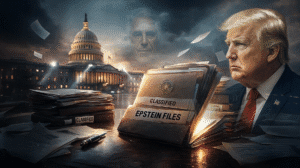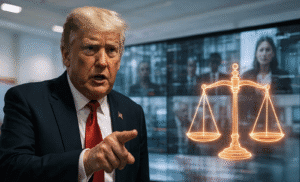YouTube has agreed to pay $24.5 million to settle a lawsuit filed by former President Donald Trump, marking the conclusion of one of the most closely watched legal battles between a political figure and a major technology platform. The dispute traces back to January 2021, when YouTube suspended Trump’s account following the January 6 Capitol attack, citing concerns that his content could incite violence. Although his account was later reinstated in March 2023, Trump argued that the suspension had unlawfully silenced him and suppressed conservative viewpoints. In July 2021, he filed suit against YouTube and its parent company, Alphabet, contending that the move infringed on his free speech rights and demonstrated partisan censorship.
For years, legal experts doubted Trump would succeed in court given the broad protections platforms enjoy under Section 230 of the Communications Decency Act, which shields companies from liability for moderating user content. Still, the litigation carried significant political weight, as Trump used the case to highlight what he described as the silencing of conservative voices. The settlement, filed publicly on September 29, 2025, arrives just days before a scheduled October 6 hearing before U.S. District Judge Yvonne Gonzalez-Rogers in Oakland, California. By reaching an agreement before that session, both sides avoided a prolonged and uncertain trial process.
Under the terms of the deal, the bulk of the funds; $22 million, will be directed to the Trust for the National Mall, which Trump has linked to a plan for constructing a White House State Ballroom. The remaining $2.5 million will be distributed among other plaintiffs in the case, including the American Conservative Union and author Naomi Wolf. Importantly, YouTube has not admitted to any wrongdoing or legal liability, and the settlement explicitly states that it is a compromise meant to avoid the costs and risks of extended litigation. No changes will be made to YouTube’s policies or moderation practices as a result of the agreement.
From YouTube’s perspective, the settlement represents a relatively minor financial outlay compared to the risks of reputational harm and the expenses of continued court battles. For Trump, however, the deal provides both symbolic and practical benefits. Not only does it allow him to claim victory in a legal fight against one of the world’s largest technology companies, but it also channels significant funds into a highly visible project he supports. By tying the outcome to the creation of a White House ballroom, Trump can point to a concrete result from his legal campaign, one that resonates with his broader narrative of being targeted yet ultimately prevailing.
The settlement also closes a chapter in Trump’s broader legal offensive against social media platforms. Earlier this year, he reached agreements with other tech giants, including a $25 million payout from Meta and a $10 million settlement from X (formerly Twitter). With YouTube now settled, all three of the major platforms that suspended him in 2021 have resolved their disputes without admitting fault. Critics, however, argue that such settlements risk creating a precedent where wealthy or high-profile figures can extract payments from tech companies without achieving systemic reform. Others contend that the deals are more symbolic than substantive, since YouTube and its peers remain free to enforce content moderation policies as they see fit.
In terms of public perception, the $24.5 million figure makes headlines, but it is a small sum for Alphabet, whose market capitalization runs into the trillions. Still, the agreement highlights the ongoing tension between powerful political figures and private technology platforms that have an outsized influence over public discourse. It also underscores how litigation can serve both as a legal tool and a political instrument, especially when settlements are structured to produce highly visible, symbolic outcomes.
By closing this case, YouTube avoids a high-stakes court ruling that might have clarified or challenged the scope of Section 230 protections and platform rights under the First Amendment. For Trump, the settlement allows him to frame the episode as another example of overcoming political and institutional opposition, while securing funding for a project he can showcase to supporters. Ultimately, the deal ends one battle but leaves the broader debate over tech power, free expression, and political influence unresolved, a debate that is likely to resurface as the digital and political spheres continue to collide.















